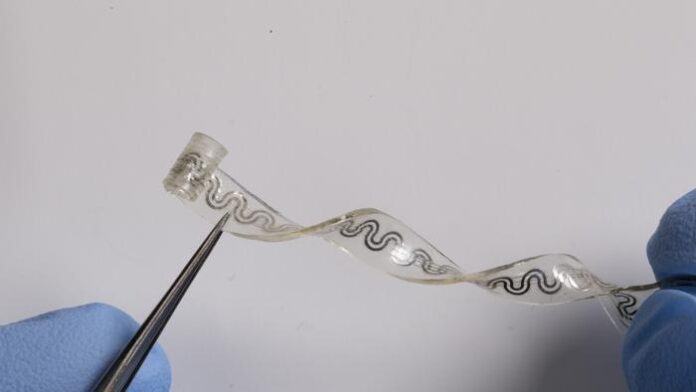Researchers at Northwestern University in Illinois U.S.A have developed a breakthrough new dissolvable implant device which could replace the need to prescribe addictive pain relief drugs post-surgery.
The treatment involves implanting a small, flexible and biocompatible device under the skin which wraps around the affected nerves. It works by offering targeted cooling to the affected area, which numbs the nerves and blocks pain signals to the brain. The patient has an external controller which allows them to remotely activate the device and to increase or decrease its intensity. Because the device is water-soluble it naturally dissolves and is absorbed into the body after it is no longer needed, removing the need for further surgery.
Lead researcher, John Rogers, says the technology, “exploits mechanisms that have some similarities to those that cause your fingers to feel numb when cold. Our implant allows that effect to be produced in a programmable way, directly and locally to targeted nerves, even those deep within surrounding soft tissues.”
Drug free alternative
The research team believe the most common application for their device will be for patients who undergo routine surgeries or amputations that are commonly prescribed addictive pain relief drugs. A study conducted in 2021 estimated that 20% of Americans who are prescribed opioids post surgery use them for too long, representing a high risk of long term addiction.
Rogers says, “Although opioids are extremely effective, they also are extremely addictive… As engineers, we are motivated by the idea of treating pain without drugs”.
How cooling helps
When you cool a nerve, the signals that travel along the nerve slow down and eventually stop. The device is targeted to peripheral nerves, which communicate sensory stimuli including pain. By specifically targeting these nerves the device can regulate pain signals in one specific region of the body.
Rogers says, “Excessive cooling can damage the nerve and the fragile tissues around it,” He goes on to say, “The duration and temperature of the cooling must therefore be controlled precisely. By monitoring the temperature at the nerve, the flow rates can be adjusted automatically to set a point that blocks pain in a reversible, safe manner.”

